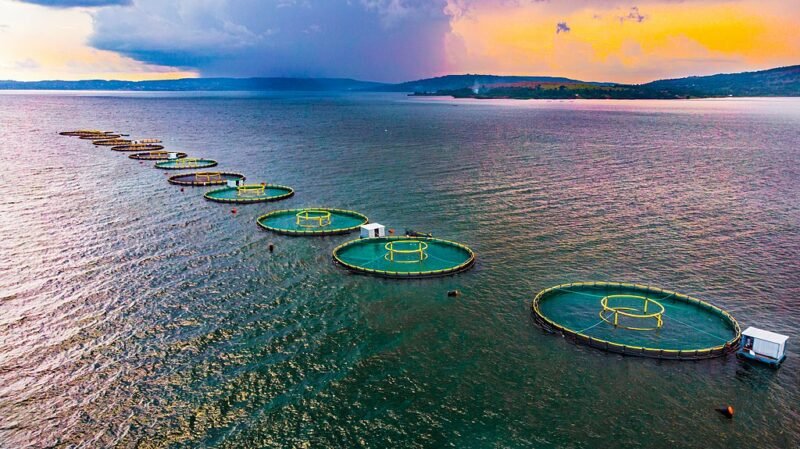The ocean is more than a vast, blue horizon—it’s a living, breathing system that supports life on Earth. From microscopic plankton to majestic whales, our seas are teeming with biodiversity. But beneath the surface, a crisis has been brewing. Overfishing, habitat destruction, and pollution are taking a toll on marine ecosystems, putting countless species and entire food chains at risk.
This is where sustainable fisheries come into the picture. Far from being just a buzzword, sustainable fisheries represent a lifeline for the planet’s oceans. They ensure that fish stocks are harvested responsibly, habitats are preserved, and future generations can continue to benefit from the sea’s rich resources. More than a method, it’s a mindset—a shift from exploitation to stewardship.
In this article, we’ll dive into how sustainable fishing practices not only maintain fish populations but also support the overall health of ocean ecosystems. You’ll discover the cascading benefits, the interconnected web of marine life, and why supporting certified sustainable fisheries is a powerful action for protecting our planet’s blue heart.
Why Ocean Health Depends on Balanced Fishing
At the core of any healthy ecosystem lies balance. In marine environments, this balance is fragile. Every species—from predator to prey—plays a role in maintaining the ocean’s natural rhythm. When one group is overfished, the entire chain can unravel.
Overfishing removes key species faster than they can reproduce. This doesn’t just reduce fish populations—it causes ripple effects throughout the food web. For example, overharvesting top predators like tuna or cod can lead to an overpopulation of smaller species, which in turn may deplete plankton or other foundational organisms.
Sustainable fisheries work to prevent this disruption. They monitor fish populations, set science-based catch limits, and adopt practices that allow marine life to replenish naturally. By leaving enough fish in the water and minimizing habitat damage, these fisheries help keep the ocean’s delicate balance intact.
When fisheries are managed with long-term ecological goals in mind, coral reefs remain vibrant, seagrass beds stay intact, and apex predators continue to patrol their territories—each contributing to a more resilient and diverse marine ecosystem.
The Role of Bycatch Reduction in Ecosystem Protection
Bycatch—the unintentional capture of non-target species—is one of the silent killers of marine life. Sea turtles, dolphins, seabirds, and juvenile fish often get caught in fishing gear meant for entirely different species. This not only threatens biodiversity but also weakens ocean ecosystems.
Sustainable fisheries invest in innovation to tackle this issue head-on. Through selective fishing gear, real-time monitoring, and area-based restrictions, they dramatically reduce bycatch rates. These changes may seem small, but their collective impact is transformative.
By protecting non-target species, we ensure their role in the ecosystem remains intact. For instance, sea turtles help maintain healthy seagrass beds, while sharks keep prey populations in check. Reducing bycatch doesn’t just save lives—it safeguards the intricate relationships that define ocean health.
Habitat Preservation: Protecting the Ocean’s Nursery Grounds
Ocean habitats—like coral reefs, mangroves, and deep-sea beds—are the nurseries, homes, and hunting grounds for countless species. Destructive fishing methods such as bottom trawling can devastate these areas, leaving behind lifeless seabeds and broken ecosystems.
Sustainable fisheries avoid or limit their impact on sensitive habitats. Many adhere to spatial management plans, including marine protected areas (MPAs), no-fishing zones, and seasonal closures. These strategies help safeguard breeding and spawning grounds.
Healthy habitats mean more robust fish populations, better water quality, and improved climate resilience. By protecting these vital underwater landscapes, sustainable fisheries allow marine ecosystems to not just survive—but to thrive.
How Sustainable Fishing Fights Climate Change
Few people realize the link between climate change and our oceans. Healthy marine ecosystems are powerful carbon sinks, absorbing up to a third of human-made CO₂. But overfishing and habitat degradation reduce this capacity.
Sustainable fisheries contribute to climate resilience by maintaining biodiversity and protecting habitats like seagrasses and mangroves, which sequester carbon at extraordinary rates. In doing so, they play a role in mitigating climate change.
Moreover, efficient and low-impact fishing techniques often used by sustainable fisheries consume less fuel and produce fewer emissions, further reducing their carbon footprint.
Empowering Coastal Communities Through Sustainability
Fishing isn’t just a global industry—it’s a way of life for millions. Coastal communities around the world depend on healthy oceans for food, jobs, and cultural identity. Unsustainable practices threaten their future.
By embracing sustainable fishing, these communities gain long-term economic stability. Certification programs, like those supported by Friend of the Sea, open doors to global markets where eco-conscious consumers demand responsibly sourced seafood.
In turn, fishers become stewards of the sea. When livelihoods depend on the health of marine ecosystems, there’s a strong incentive to protect them for generations to come.
Consumer Choices That Drive Big Change
Every time you choose seafood, you’re casting a vote for the kind of ocean you want. Products labeled as sustainably sourced aren’t just good for your plate—they’re good for the planet.
By supporting brands and fisheries certified by reputable organizations like Friend of the Sea, consumers send a clear message: we care about how our seafood is caught. This consumer pressure encourages more fisheries to adopt sustainable practices, creating a ripple effect of positive change across the industry.
Conclusion:
Sustainable fisheries are not a luxury or niche concept—they are a necessity. They represent a path forward where human needs and environmental health are not at odds but in harmony. By promoting balance, protecting habitats, reducing bycatch, and empowering communities, sustainable fisheries are helping to restore and maintain the vital health of our ocean ecosystems.
The sea has always given generously. Now, it’s our turn to give back—by making informed choices, supporting sustainability, and recognizing that a thriving ocean is key to a thriving planet.
Explore more about how we’re shaping the future of the oceans at Friend of the Sea.


